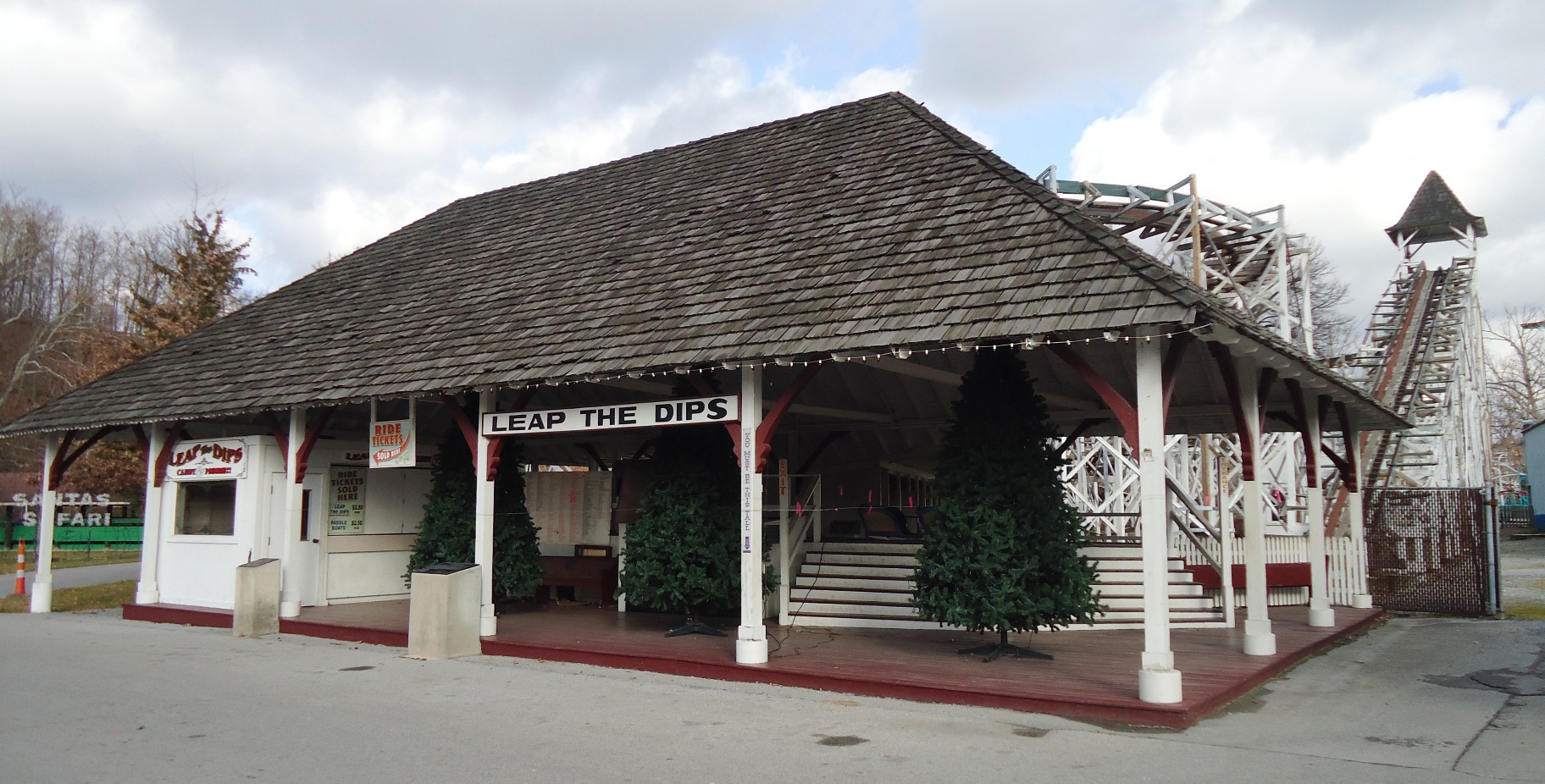This ride wasn’t nearly as fun as a real roller coaster ride, but the fight to keep the historic tax credit alive felt like one with all the ups, downs, twists, and turns.

The National Historic Landmark Leap-the-Dips Roller Coaster in Lakemont Park would have been much more fun to ride!
If you were paying attention during the end of 2017, you may be aware the Republican-led Congress passed the most significant rewrite of the federal tax code in over 30 years. Reactions to the new tax bill ranged from House Minority Leader Nancy Pelosi’s declaration that it is “Armageddon … the worst bill in the history of Congress” to President Donald Trump’s “It is always a lot of fun when you win … It’s the largest tax cut in the history of our country, and reform, but the tax cut — really something special.”
As I just finished filing my 2017 tax return, I am left wondering if tax reform is “Armageddon” or “something special.” I guess I’ll find out in February 2018!
Federal Historic Tax Credit Update
I am certain one outcome of tax reform is that we witnessed a resurrection as the federal Historic Tax Credit (HTC) truly rose from the dead.
After more than five years of consistent advocacy, the PA State Historic Preservation Office is pleased to report that the 20 percent historic tax credit (HTC) has survived tax reform – but it was a roller coaster ride! Unfortunately, the 10 percent tax credit didn’t make it.
This hard-won legislative achievement is particularly gratifying because the HTC was repeatedly targeted for elimination. The first major threat occurred when a tax reform proposal introduced by former House Ways and Means Committee Chairman Dave Camp, R-Mich., in February 2014 suggested repealing all rehabilitation tax incentives. The HTC was also among the tax credit programs targeted for elimination in June 2016, when House Speaker Paul Ryan, R-Wis., released the Republican “Blueprint” for tax reform.
PA SHPO’s Scott Doyle, Heritage Consulting Group’s Cindy Hamilton, and Shaw Sprague from the National Trust are on their way to talk with PA Senators about historic tax credit at last year’s Historic Preservation Advocacy Week.
These threats proved real when tax legislation started moving through Congress. In the House of Representatives, the Tax Cut and Jobs Act (H.R. 1), introduced on November 2, eliminated both the 20 and 10 percent rehabilitation tax credits entirely. This challenge was compounded by the initial version of the Senate tax reform bill that reduced the 20 percent HTC by half and eliminating the 10 percent older building credit.
The preservation community’s multiyear advocacy was championed by longtime HTC supporters Sens. Ben Cardin, D-Md., and Susan Collins, R-Maine, and Reps. Mike Kelly, R-Pa., and Earl Blumenauer, D-Ore.—who sponsored the Historic Tax Credit Improvement Act.
This strong showing of support resulted in an amendment to restore the HTC to 20 percent. The amendment was accepted at a critical moment in the Senate Finance Committee’s markup of the tax bill. To file the amendment, however, Sen. Cassidy needed to identify a way to offset the cost of the incentive.
The solution was to take the HTC in phases over five years instead of in its entirety the year a rehabilitated building is completed. The Joint Committee on Taxation estimated that phasing the HTC in this way reduces the cost of the program by approximately $2 billion over 10 years.
While this change to the HTC is expected to result in a slight reduction in its value, adoption of the Cassidy amendment represents a remarkable achievement by the preservation community. Thank you to all who participated in this effort.
You can read more about all of the tax code changes, including those to the HTC in Public Law No: 115-97 (12/22/2017).
The Keppel Building in Lancaster has been rehabilitated thanks to the federal and state historic tax credits.
Pennsylvania HPTC Update
After 15 years of advocacy efforts by Preservation Pennsylvania and economic development community, the Pennsylvania Historic Preservation Tax Credit (HPTC) program was launched in state Fiscal Year 2013-2014. To date, the program has awarded tax credits allocations to 61 projects in 15 counties and leveraged nearly $706 million in private investment and federal tax credits.
Despite this success, the program sunsets after state Fiscal Year 2019-2020 and there is a need to improve the program. To justify program reauthorization and identify areas for improvement, Preservation Pennsylvania is leading the effort to
- bring together developers, consultants, investors and community development leaders that participate in the historic tax credit program,
- prepare a detailed fiscal impact study to measure the economic effectiveness of an improved Pennsylvania’s historic tax credit program,
- identify tools and legislative changes to improve the current program, and
- implement a strategy to reauthorize the program before it sunsets in FY 2019-2020.
For more information, please contact Preservation Pennsylvania as they begin to mobilize for re-authorization in Spring 2018.
Comment Policy
PHMC welcomes and encourages topic-related comments on this blog. PHMC reserves the right to remove comments that in PHMC’s discretion do not follow participation guidelines.
Commenters and Comments shall be related to the blog post topic and respectful of others who use this site.
Commenters and Comments shall not: use language that is offensive, inflammatory or provocative (this includes, but is not limited to, using profanity, obscene, or vulgar comments); disparage other commenters or people; condone illegal activity; identify the location of known or suspected archeological sites; post personal information in comments such as addresses, phone numbers, e-mail addresses or other contact details, which may relate to you or other individuals; impersonate or falsely claim to represent a person or an organization; make any commercial endorsement or promotion of any product, service or publication.
If you would like to comment on other topics not related to this blog post but related to PHMC, please fill out the PHMC Contact Us Form.